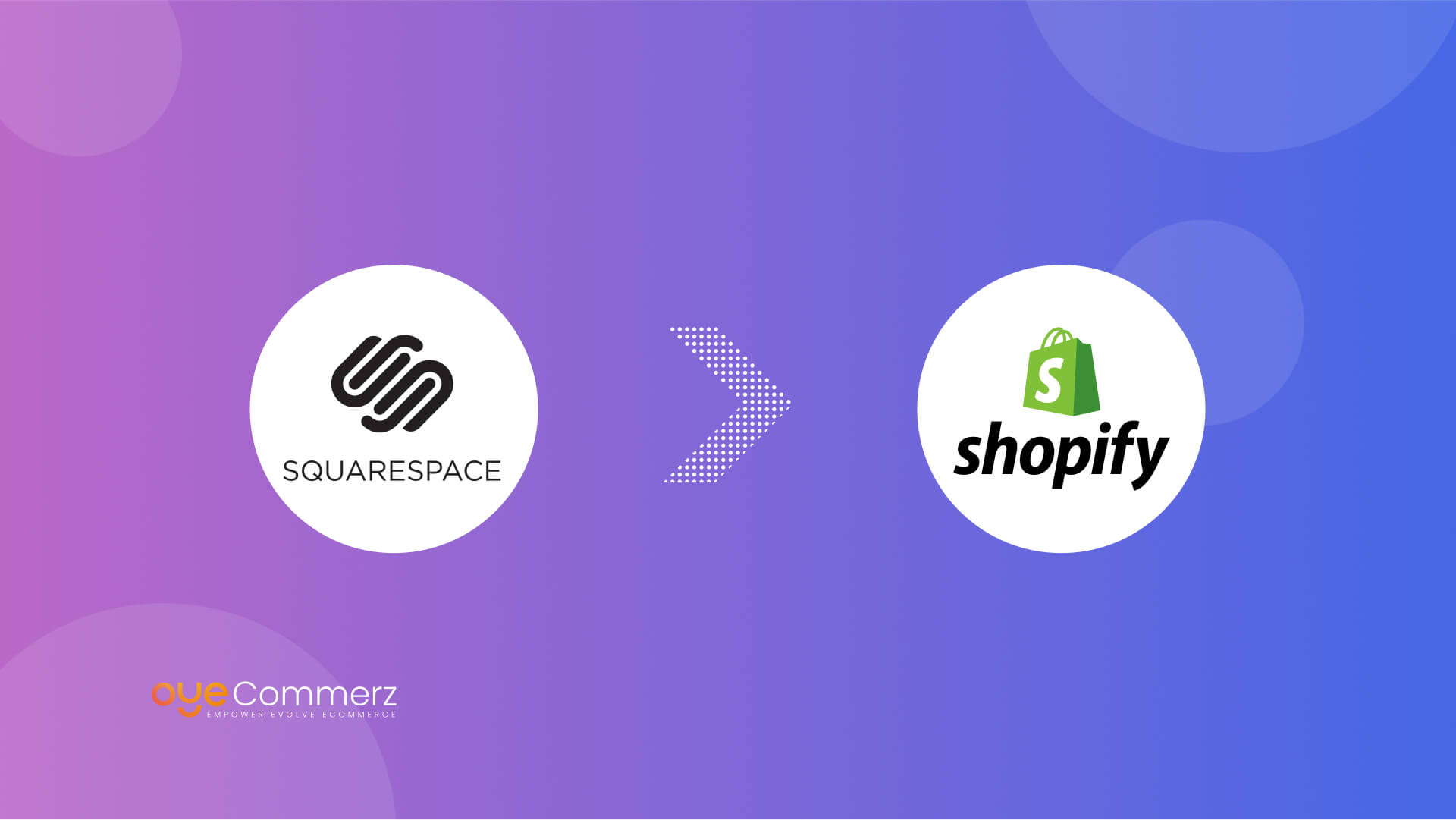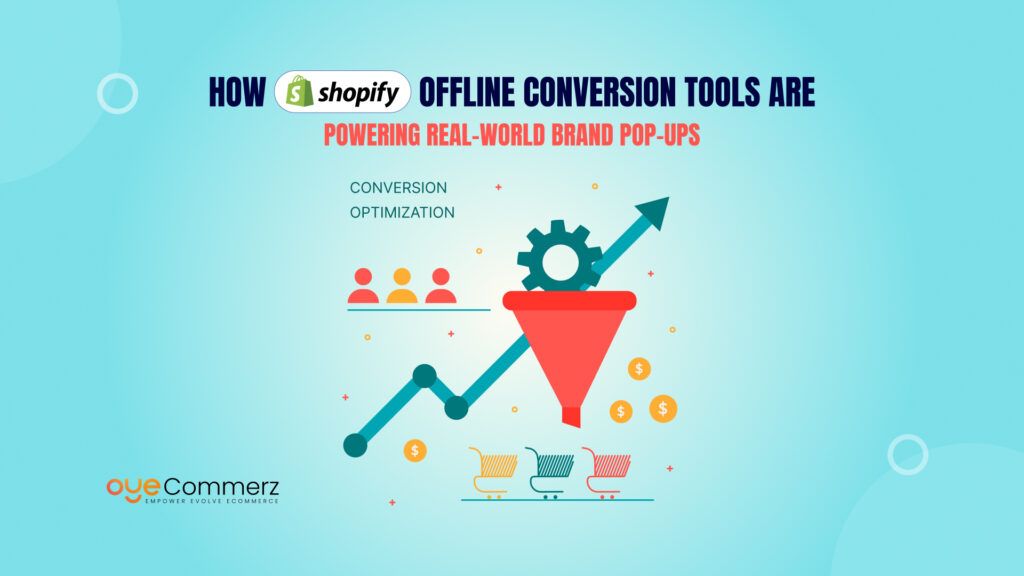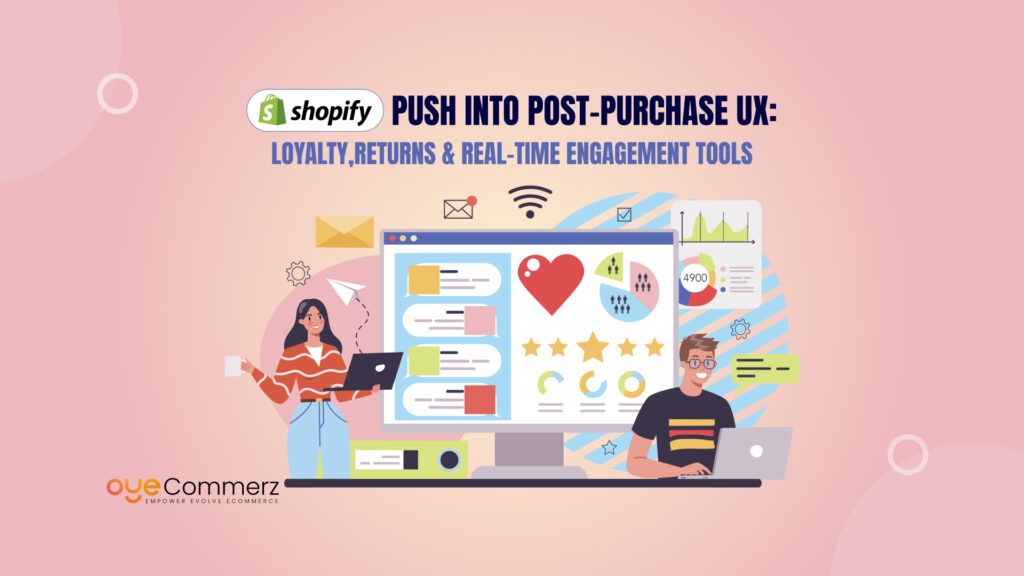The type, scope, and span of e-commerce continue to undergo changes in nearly every business that exists in today’s market environment. Soon you may realize that the platform you have chosen is not enough to accommodate the growth of your business. For an eCommerce site building, Squarespace is a great tool with great performance and rich functionality, but at the same time, the famous Shopify platform is considered to be stronger and more versatile for such purposes. This is a detailed guide on how to prepare your Squarespace store for migration to Shopify.
Discover our Squarespace to Shopify Migration Services today, and let’s collaborate to create a prosperous future for your eCommerce success. Contact us now to begin!
Table of Contents
ToggleInteresting Shopify Stats in 2024
With a 26% market share, Shopify is the leading eCommerce platform. It hosts over 4.6 million stores globally. In 2023, Shopify processed an average of 199 million orders each month. The Shopify app store offers more than 13,000 apps. The most popular Shopify theme is Dawn. Gross Merchandise Volume (GMV) grew by 20% in 2023, reaching $235.9 billion, up from $197 billion in 2022. Shopify ranks as the second-largest retailer in US retail eCommerce sales. During the 2023 Black Friday Cyber Monday weekend, Shopify handled up to 967,000 requests per second at its peak. Additionally, Shopify’s overall conversion rate surpasses its competitors by up to 36%, averaging a 15% advantage.
What is eCommerce Migration?
It is common knowledge that eCommerce is the process of effectively selling products and services online; therefore, eCommerce migration is the act of moving your online store data such as products, customers, orders, and other related data from one platform to another. This process is a complex one and it requires several important stages to guarantee that all data is properly transferred and your store continues to work in the course of the transition. The objective is to reduce downtime and data loss while at the same time maximizing the advantages of the new platform.
Advantages of Transition from Squarespace to Shopify
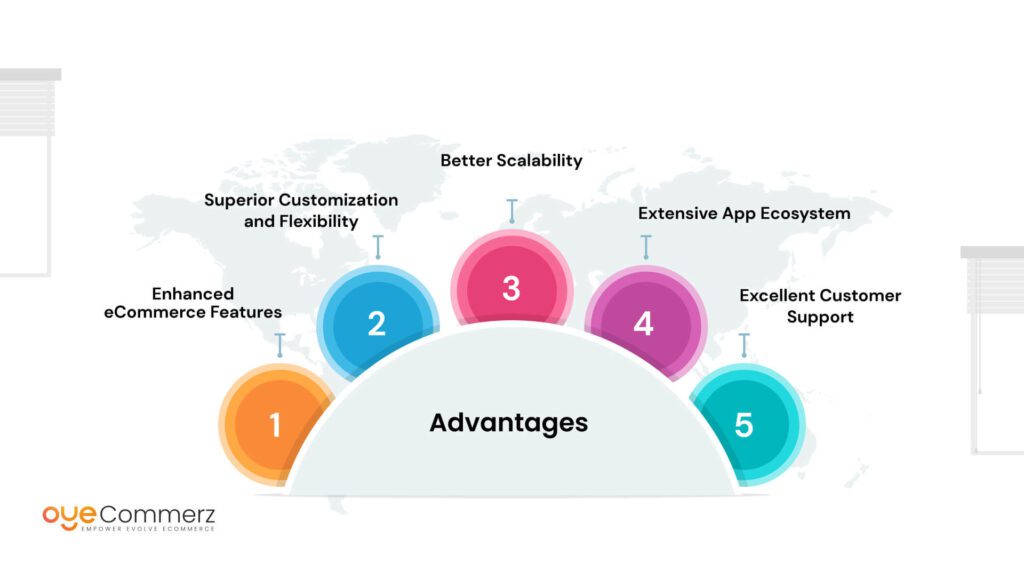
1. Enhanced eCommerce Features
Shopify also includes a variety of features that can be used exclusively for online shopping. Shopify has features that enable the handling of business aspects such as inventory, sales, and many others in an efficient manner.
2. Superior Customization and Flexibility
Squarespace has elegant themes and also a sleek editor with drag-and-drop capacity while Shopify is less limiting and can be modified more with ease. Furthermore, since the firm is building the overall site from scratch, the available themes are almost limitless; the groundwork can also be altered, giving the firm flexibility throughout the development of the site to create the ideal shopping experience for viewers with the brand’s aesthetic at heart.
3. Better Scalability
Thus, you only make a choice based on the prospective growth of your business and need a platform that will help you reach new steps. Shopify has been developed to have the capacity to handle higher traffic and sales since they are common with growing businesses. This infrastructure is suitable for everything from small boutiques to large enterprises.
4. Extensive App Ecosystem
Several thousands of applications are available in the Shopify app store enabling you to add more features to your store. No matter what kind of facility you require, whether it is marketing, customer support, or stock control, you can find an app that will complement your Shopify store.
5. Excellent Customer Support
Some of the specifics include that Shopify is known to have round-the-clock customer support. Whenever you have questions regarding problems or with efficiency in your store or something that’s technical, Shopify has your back.
Guidelines on Squarespace to Shopify Migration
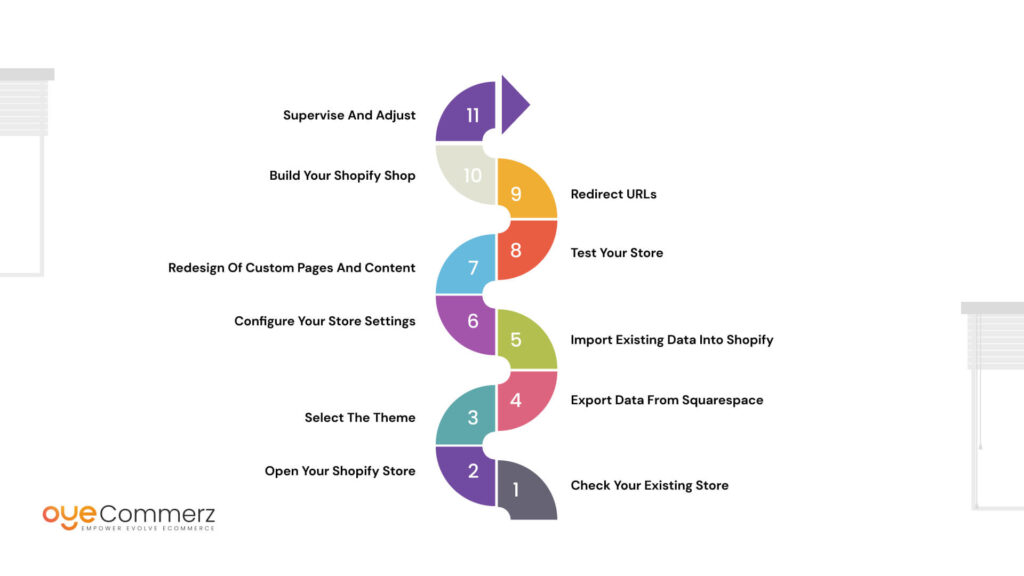
Since the migration from Squarespace to Shopify has been established, it is critical to realize that its process is rather complex. This section will thus provide a step-by-step guide on how to make the transition in order to produce the best results.
-
Step 1: Check Your Existing Store
It is necessary to assess and count all the objects in the store before beginning the migration process. To thoroughly record all products, categories, customers, and orders make it a habit to document everything. List any special features that you have or any other software tools or platforms you integrate with, for instance, JIRA, Asana, and so on. This should help you get a feel of what ought to be migrated and avoid instances when some or most of the things that should have been migrated are left out.
-
Step 2: Open Your Shopify Store
Obtain a Shopify store and have your store up and ready to be used. Opt for a plan of your choice depending on the needs of your business operation. Shopify has a convenient trial version where you can get a trial account for $0 for 14 days. -
Step 3: Select the theme
Choose amongst the Shopify available themes as the one that suits the brand and gives the required features. Shopify has both paid and non-paid themes. This should include aspects concerning the ability of the theme to be modified, compatibility with mobile devices, and the various customization fields. -
Step 4: Export Data from Squarespace
Using Squarespace for your business, you can export some store data such as products and orders, to other applications. To do this, open the application and navigate to the setting where you have to go to advance and click on import/export then follow the steps to export your data to CSV file. As a reminder, there will be some data such as the clients’ accounts that will require being exported. -
Step 5: Import Existing Data into Shopify
After that, it is possible to transfer your data to Shopify if you have exported it from Squarespace. One of the tools that Shopify has is the Store Importer app for this purpose mostly among others. Use the CSV files that you have exported to import your products, customers, and orders. It is advisable to check all the imported data to make sure that all the records have been imported successfully. -
Step 6: Configure Your Store Settings
Once your data has been imported the next step is to set up your store in Shopify. This entails creating options for payment for products, delivery, and taxes among others. Shopify integrates with a multitude of payment gateway providers which makes it easier for a business to find the most suitable one to use. -
Step 7: Redesign of Custom Pages and Content
Any additional web pages that you had for your previous website like an About Us page or an ongoing blog, all are going to have to be recreated on Shopify. Shopify offers features for generating and styling your pages, so it does not rely on HTML and CSS codes. Some of the stuff you may have to paste and press copy or you may want to use the HTML editor for fancy pages. -
Step 8: Test Your Store
It is therefore important to ensure that you pilot your new store before you actually launch it. Ensure that all products look good, that prices and quantities are correct, and all the links are clickable and place menus in their correct positions. Order simple products in your store to test its functionality and to check the working of the payment gateways present in it. -
Step 9: Redirect URLs
To retain the means by which potential consumers locate your supplied goods as well as sustain the search engine rankings, create 301 redirects from the old Squarespace links to new Shopify links. It will also benefit in saving the SEO efforts and avoiding the creation of bad links that are unhealthy for any website. -
Step 10: Build Your Shopify Shop
After that, ensure you have configured all the settings properly, and everything is ready to go, you can now start your new Shopify store. Inform your clients about the change through email and on your social media pages for customer communication, and expect questions/issues from them.
-
Step 11: Supervise and Adjust
It is advisable to track your store’s performance after launching it into the market. It benefits from different forms of analytics from Shopify to monitor the resulting sales, traffic, customers’ behavior, and others. Adjust your store with the intent of providing your customers with the best shopping experience with the aim of increasing sales.
Shopify was an e-commerce company established with the primary intention of providing its clients with retailing solutions for Internet stores and retail point-of-sale terminals. It is valued for its capabilities to cover quite a wide number of aspects related to e-commerce and its flexibility. Below are the advantages, and disadvantages of using Shopify-online store builder.
Increase Your E-Commerce Business Quality with OyeCommerz!
Are you prepared to accelerate your eCommerce business? At OyeCommerz, we excel in providing seamless eCommerce migration services tailored to your specific industry—whether it’s pharmacy, jewelry, fashion, cannabis, or sports. Our team of experts ensures a smooth transition with minimal downtime and an optimized online presence.
Contact to Migrate your Site to Shopify Now
Conclusion
Transferring from one platform, Squarespace, to another, Shopify, when running an online store can seem like a complicated undertaking, but it can be accomplished effectively if a lot of planning and preparation is done. Thanks to superior eCommerce capabilities, exceptional flexibility, and an abundance of apps, you can build a solid online store and grow it according to your company’s needs.
Remember, preparation is key. Spend time making an evaluation of the current store, regarding the necessary and proper steps to follow in setting up the Shopify store, taking time to test the store before launching. Still, with the right strategy, it is possible to switch and begin enjoying the advantages of a better eCommerce site.
Migration to Shopify breaks the old chains of limitations and establishes the ground for fresh opportunities for the growth of your business in the world of eCommerce. And so, following the steps of how to prepare your Squarespace store for migration to Shopify will help you achieve a successful migration and a stronger future for your online store.

